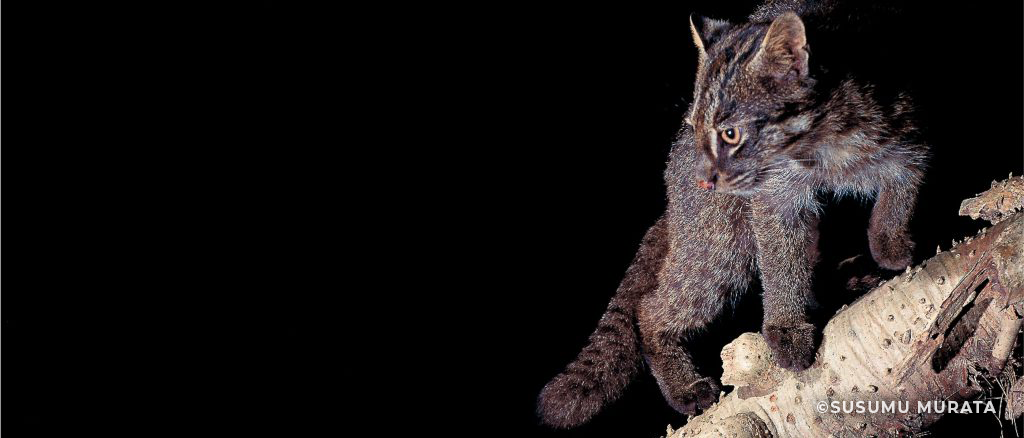General Information About Iriomote Cats
Iriomote Cats
The wild Iriomote cat (Prionailurus bengalensis iriomotensis) is a sub-species of the leopard cat (Prionailurus bengalensis) that is endemic to Iriomote Island.
Mr. Yukio Togawa was a noted novelist, scientist and the father of Kumi, President of JTEF. He discovered the cat in 1965 and it was registered as a new species in 1967. The fact that a wild cat inhabited in such a small island (about 298 square km2 as large as Las Vegas) was a miracle and the discovery surprised the world.
Iriomote Island has rich habitats blessed with lots of water and forests. It has developed its unique ecosystem for 90,000 years after it separated from the Eurasian Continent, which produced many endemic species including the Iriomote cats.
The Iriomote cat is almost the same size as a domestic cat (its weight is 3-5 kilogram), but has a longer trunk, shorter legs and a fatter tail. The body is brindled and has white fur around its eyes. The face has similar markings like a tiger and a scruffy neck. It is nocturnal but mostly active at dawn and dusk. It is solitary except when mating.
Social Behavior of the Iriomote Cat
Iriomote cat life phases are divided into two types: one is settled in a certain home range. The other is still transient and looking for a home territory. The first type is usually a young cat, but sometimes it might be an older cat who is no longer able to fight very well. Young cats, soon after leaving their mother and independent, begin looking for a new range to stake out as their own. Only the cats with their own territory can mate.
A female cat who settles in a home range needs good cover in order to secure a place to hunt and make a safe den. Each female’s home range never overlaps with another female. When one female dies, its home range is taken over by another female.
A male cat settles into a female’s home range to mate. It moves around, often between one or two home ranges of other female cats. But it will avoid entering another male’s home range.
Life of Iriomote Cats
Spring: In the beginning of the rainy season (in May) the weather become warmer. During this period, female cats reduce their activities in the daytime and deliver one or two kittens near their hunting ground such as inside a hollow tree trunk.
Summer: When the powder puff tree (Barringtonia racemosa) are in bloom, mothers are busy feeding her lively kittens and keeping them safe.
Fall: The north wind starts to blow in, the kittens begin to be more independent from their mother, and both males and females will start to be active at dawn and dusk, more than before.
Young male cats will move around and after a few years, they may be able to establish a home range including a female’s territory, and mate. Female cats are said to stay near and succeed their mother’s home range, but it isn’t clear and more research is required in this area.
Winter: A cold rainy season is the mating season for the cats. The cats move more during the day and sometimes females and males are seen together.




